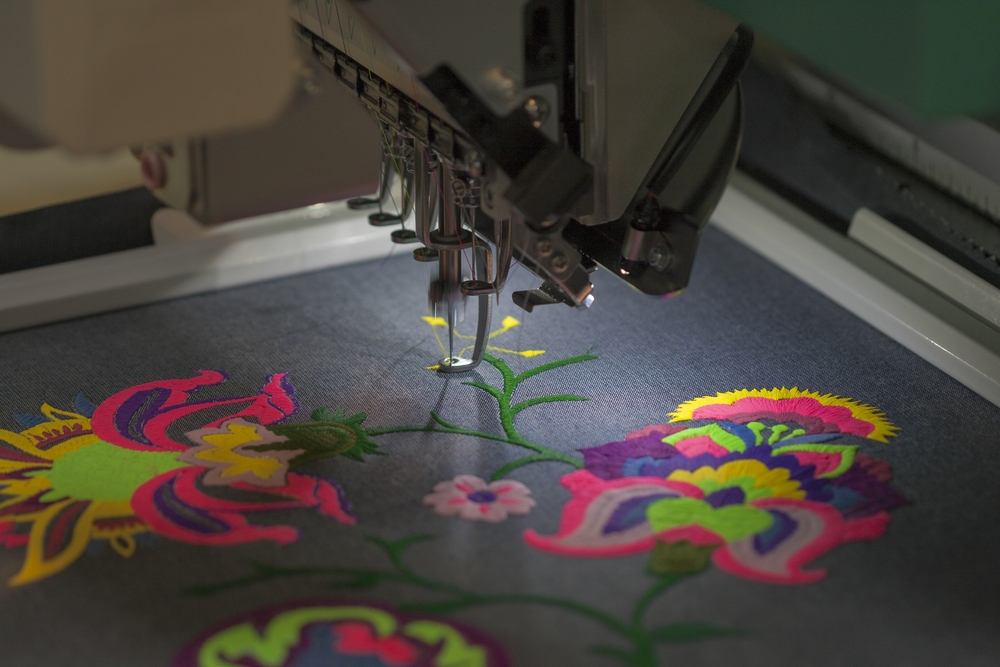Customized Digitizing for Embroidery: Tailored to Your Demands
Customized Digitizing for Embroidery: Tailored to Your Demands
Blog Article
Grasping the Embroidery Digitizing Process: Your Ultimate Overview
Needlework digitizing is a careful craft that requires precision and expertise to equate complex layouts into electronic styles for maker embroidery. As artisans embark on this trip to master the embroidery digitizing process, a thorough understanding of the basics sets the structure for quality.

Comprehending Embroidery Digitizing Basics
Needlework digitizing fundamentals develop the foundation whereupon elaborate designs are translated right into machine-readable layouts for specific stitching. This initial action in the needlework digitizing procedure is critical for guaranteeing that the last stitched item is a devoted representation of the original design. Understanding needlework digitizing basics includes understanding essential principles such as stitch kinds, sew instructions, density, padding, and pull compensation.
Stitch kinds play a vital function in determining the aesthetic and textural end result of the embroidered design. By choosing the ideal stitch type, whether it be satin, fill, or running stitch, digitizers can attain the wanted effect and boost the total top quality of the needlework. Furthermore, stitch instructions influences the flow and measurement of the design, while density figures out the spacing and protection of the stitches.
Furthermore, underlay sewing provides security to the design by safeguarding the textile and stopping distortion during the needlework procedure. Draw settlement is one more necessary factor to consider to neutralize the all-natural propensity of textile to agreement when stitched. Understanding these embroidery digitizing fundamentals is basic for producing professional-quality embroidered products.
Selecting the Right Digitizing Software
Selecting the ideal digitizing software program is a vital choice that considerably influences the performance and quality of the needlework digitizing procedure. Digitizing for Embroidery. When picking the appropriate digitizing software application, it is important to take into consideration factors such as the intricacy of styles you intend to create, the user-friendliness of the software, the level of client support supplied, and the compatibility with your embroidery maker
There are different digitizing software alternatives available out there, ranging from standard programs for novices to sophisticated software for specialist digitizers. Some preferred choices consist of Wilcom EmbroideryStudio, Hatch Embroidery Software, and PulseID. These software use a broad range of tools and functions to aid you produce elaborate layouts with convenience.
Prior to choosing, it is a good idea to discover the various software alternatives through cost-free tests or trials to establish which one finest fits your requirements. Furthermore, reading testimonials and looking for recommendations from seasoned digitizers can give useful insights into the strengths and weaknesses of each software (Digitizing for Embroidery). By very carefully examining your needs and comparing the attributes of various digitizing software program, you can make an educated option that improves your needlework digitizing workflow
Digitizing Tools and Methods

Optimizing Style Setup for Needlework
Grasping the complexities of style setups is fundamental in accomplishing optimum cause the embroidery digitizing procedure, building upon the structure laid by comprehending digitizing tools and strategies. When maximizing layout settings for needlework, it is important to consider variables such as stitch kind, thickness, underlay, pull settlement, and enrollment. Sew kind selection impacts the general appearance and try these out feel of the layout, with alternatives like satin, fill, and running stitches supplying different textures and impacts. Thickness describes the spacing and density of stitches, affecting the design's coverage and durability. Proper underlay sewing provides security and prevents textile distortion, specifically for complex styles or on stretchy products. Pull settlement changes for textile stretch during sewing, ensuring precise style duplication. Enrollment setups straighten different components of the layout precisely, keeping total layout stability. By fine-tuning these design settings, embroiderers can boost the high quality and accuracy of their embroidered productions.

Troubleshooting Common Digitizing Issues
When encountering common digitizing issues during the embroidery procedure, it is necessary to recognize the root creates and implement effective services without delay. One usual problem is stitch thickness issues, where stitches might be as well thick, causing the textile to tighten, or too sporadic, causing spaces in the layout. Adjusting the stitch thickness setups in the digitizing software can aid solve this concern.
An additional frequent challenge is string breaks throughout the needlework procedure. This can happen as a result of numerous reasons such as inaccurate stress settings, plain needles, or utilizing low-grade string. Making certain appropriate upkeep of the embroidery machine, including routine needle changes and tension changes, can minimize the incident of thread breaks.
Moreover, layout registration errors can cause misaligned aspects within the needlework style. Inspecting the layout placement have a peek at this website in the digitizing software and making required adjustments before sewing can assist in preventing this problem. By addressing these typical digitizing concerns promptly and properly, you can guarantee a smoother needlework process and high-grade ended up products.
Final Thought
In conclusion, understanding the needlework digitizing procedure needs a strong understanding of the basics, the best choice of software, and knowledge of tools and techniques. Maximizing layout setups and troubleshooting usual digitizing concerns are critical action in making certain top quality embroidery outcomes. By complying with these actions faithfully, one can achieve accuracy and click now effectiveness in the digitizing procedure.
Report this page